You’ll find Govardhan Hill on a map of India about 80 km NW of Agra. On a transcendental map, however, Govardhan is at the center of the spiritual world, Goloka Vrindavan.
When Krishna lifted Govardhana Hill, He wanted to show that taking exclusive shelter of His lotus feet protects us from all obstacles and dangers – even the wrath of an offended King Indra, who attempted to flood Vrindavan. It was no effort for Krishna to protect either His land or His devotees; He simply lifted Govardhan over His head like a huge umbrella and offered whoever wanted it shelter. Nothing has changed. Taking shelter of Giriraja Govardhan still offers pilgrims perfect spiritual security and, magically, fulfills their desires.
The residents of Vrindavan know Govardhan’s mood. Brijabasi schoolchildren circumambulate Giriraja for help in their upcoming exams and farmers pray for a good harvest. But devotees know that Giriraja Govardhan can bless them with the ultimate gift – pure love of Sri Sri Radha and Krishna and the opportunity to serve Them.
Giriraja can best be served by circumambulating him, engaging in kirtana, and hearing and chanting the glories of Giridhari Krishna, who held him aloft for seven days on the little finger of His left hand. Some perform their worship by continuously offering him their prostrated obeisances as they circumambulate.
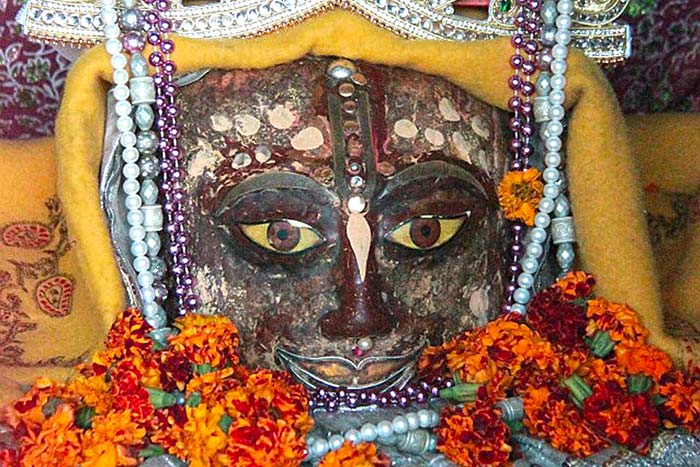
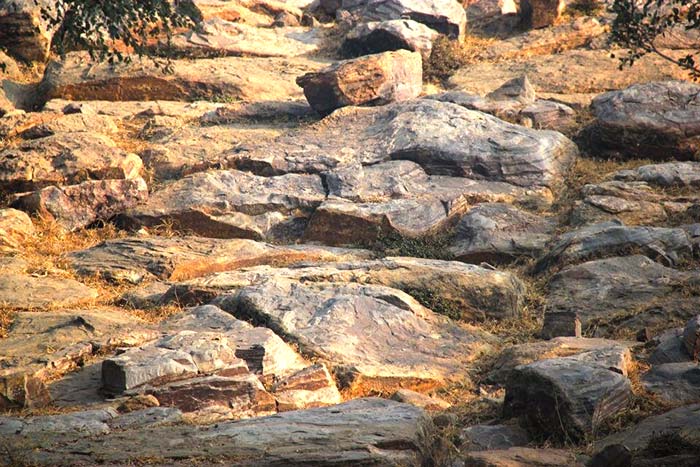
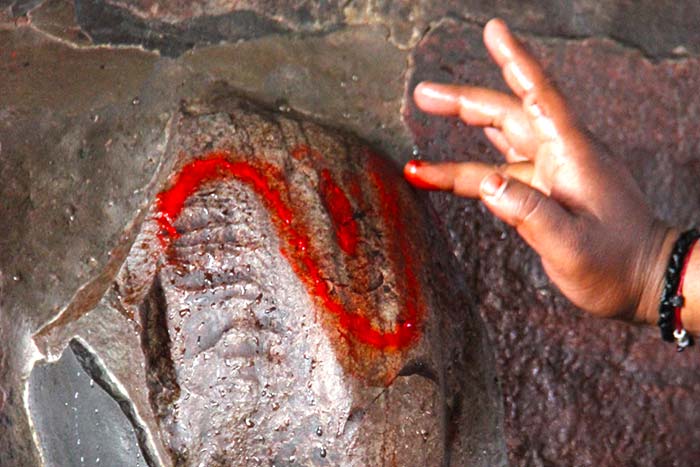

namaste girirajaya
sri govardhana namine
ashesha klesha nashaya
paramananda dayine
I offer my respectful obeisances unto the king of hills whose name is Govardhan. He destroys unlimited miseries and bestows the highest bliss.
namo vṛndāvanāṅkāya
tubhyaṃ goloka-mauline
pūrṇa-brahmātapatrāya
namo govardhanāya ca
Obeisances to you, who are the crown of Goloka and who sits on Vrindavan’s lap. Obeisances to Govardhan, the umbrella of the Supreme Personality of Godhead! (Spoken by Sri Krishna in the Garga-samhita 2.2.15)
The holy Yamuna river is more than just a body of water; it is a sacred lifeline that has nourished the land and the people of India for thousands of years. Its pristine waters have descended from the spiritual realm, and therefore, it is regarded as the embodiment of purity and divinity.
The Yamuna is also a symbol of compassion and forgiveness, taking a dip in its holy waters can wash away all the sins and help to attain spiritual upliftment.
The Yamuna river is a testament to the deep spiritual connection between nature and humanity. As we honor and protect this sacred waterway, we also honor and protect the divine energy that flows through all living beings.
Maharani Yamuna, whose darkish blue complexion resembles that of Krishna, actively participates in the playful and amorous pastimes of Shri Radha-Krishna Yugal. She encircles three sides of Vrindavan, creating countless charming nikunjas on both banks adorned with dense trees, creepers, flowers, and fruits to fully support the rasa-vilasa of Priya-Priyatama. The divine Ghats bedecked with jewels and various bowers made from kadamba, tamala, amra, bakula, and other types of trees adorn and beautify her.
The Youthful Couple Shri Radha-Krishna and their sakhis perform water pastimes and boating pastimes in the waters of Shri Yamuna, which is saturated with prema and always adorned with seven-petalled lotuses. This Bhagvati Yamuna, who eternally serves the Divine Couple, is supremely worshipful.
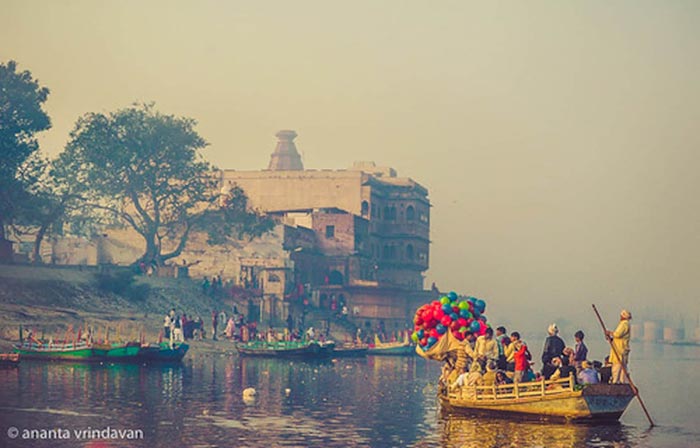

gangadi-tirtha-parisevita-pada-padmam
goloka-saukhya-rasa-puramahim mahimna
aplavitakhila-sudhasu-jalam sukhabdhau
radha-mukund-muditam yamunam namami
I offer my obeisances to Yamuna, whose lotus feet are reverentially served by all holy places, including the Ganga. Her exalted currents carry the blissful nectar of Goloka, and she has attracted by her greatness all the sanctified waters to fill her. She delights Sri Radha and Mukunda, immersing them in an ocean of happiness.
Yogamaya Devi, also known as Paurnamasi Devi, is an embodiment of the divine feminine energy. She is an incarnation of Shakti, the supreme energy, and the younger sister of Lord Sri Krishna.
Yogamaya Devi’s name derives from “yoga” and “maya,” which together mean “mystical illusion.” She is considered the goddess of illusion and spiritual potency, and she is responsible for the creation of the spiritual realm and the veil of illusion that separates it from the material world.
In the scriptures, Yogamaya Devi is described as a goddess with a dark complexion, dressed in yellow garments, and adorned with various ornaments and jewels. She is depicted with four arms, holding a conch shell, a discus, a mace, and a lotus.
Yogamaya Devi is closely associated with Lord Krishna’s pastimes. According to vedic Shastras, she was born on the same day as Krishna and was exchanged with Yashoda’s daughter, whom Krishna’s uncle Kamsa intended to kill. Yogamaya Devi then transferred Krishna from Mathura to Vrindavan to keep him safe from Kamsa.
Yogamaya Devi is also regarded as the goddess of transformation and change. Her worship has spiritual strength and help devotees overcome the obstacles on their path to enlightenment.
In Vrindavan, one of the holiest cities in India, Yogamaya Devi is worshipped as a powerful and compassionate goddess.
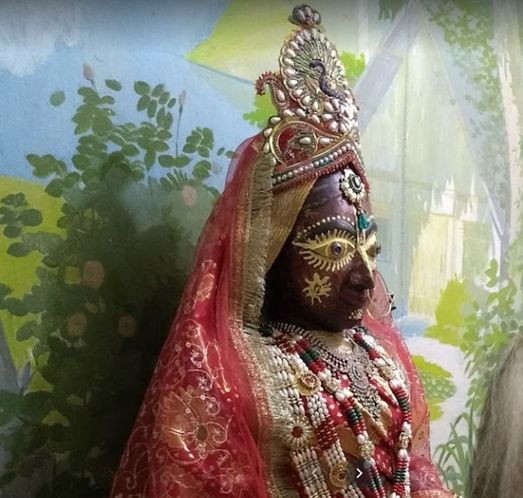
kuladevi yogamaya more kripa kori avarana sambaribe kabe visvodari
O Yogamaya! When will you show mercy to me by lifting up the curtain of illusion with which you shroud the universe in your external form of mahamaya? You are known as Kuladevi, the transcendental worshipable goddess of all the vaishnava dynasties.
e dase janani! kori‘ akaitava doya vrindavane deha‘ sthana tumi yogamaya
O my dear mother! Showing your causeless mercy to this servant, give me a place in Vrindavan, for you are Yogamaya herself (the internal energy of yoga, or union).
(Kalyana-kalpataru, by Srila Bhaktivinoda Thakura)
The holy dust of Vrindavan is a powerful and an essential element of the Vrindavan’s spiritual realm. Vrindavan is the place where Lord Krishna spent his childhood and performed his divine pastimes, and the dust of this holy land is considered to be imbued with his blessings and grace.
In the scriptures, it is said that the dust of Vrindavan has the ability to purify the soul and remove all impurities. The mere act of walking on the dust of Vrindavan is believed to be an act of devotion and a means of attaining spiritual enlightenment.
The holy dust of Vrindavan is also closely associated with the concept of “leela,” or divine play. It is believed that the dust carries the vibrations and imprints of Lord Krishna’s pastimes, and by coming in contact with it, one can experience the divine presence of the Lord.
The dust of Vrindavan is particularly revered by the devotees of Lord Krishna, who believe that it has the power to grant their wishes and fulfill their desires. It is a common practice for devotees to collect the dust of Vrindavan in small pouches and carry it with them as a sacred talisman.
In Vrindavan, the dust is also used in various religious rituals and ceremonies. During the Holi festival, for example, devotees apply the holy dust on each other’s faces as a sign of love and devotion.
The holy dust of Vrindavan is not just a physical entity but a potent symbol of the town’s spiritual legacy. It represents the divine energy that permeates everything in Vrindavan and serves as a reminder of the power of devotion and the ultimate truth that lies at the heart of all creation.
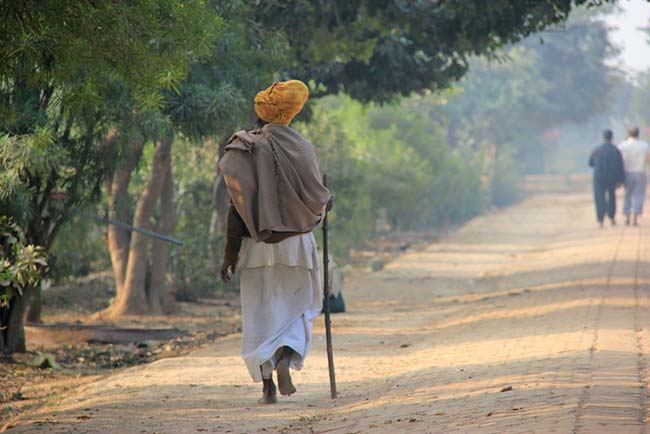
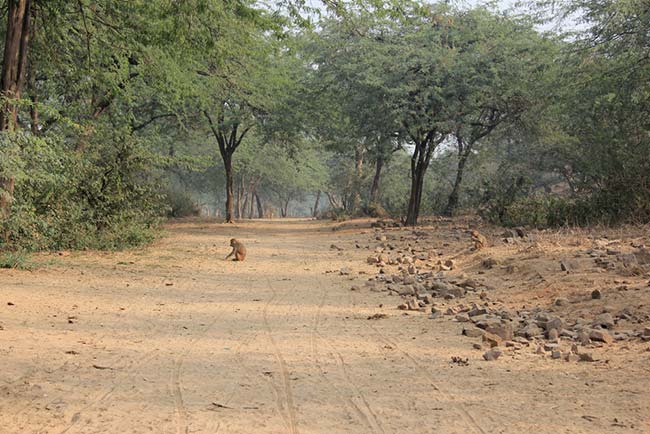
The following excerpt from Srila Prabhupada’s Krishna book (chapter 38, “Akrura’s Journey to Vrndavana”) is exemplary: “One who intends to visit Vrindavan should follow the ideal footsteps of Akrura and always think of the pastimes and activities of the Lord. As soon as one reaches the boundary of Vrindavan, he should immediately smear the dust of Vrindavan over his body without thinking of his material position and prestige.”
sukhamaya brndaba – kaba habe darsana se dhuli lagibe kabe gaya preme gadagada haina – radha-krsna-nama laina kandiya bedaba ubharaya
When will I see the blissful land of Vrindavan? When will I smear the dust of Vrindavan over my body? When will I walk about Vrindavan, loudly singing the names of Radha and Krishna and crying, my voice choked with ecstatic love?
(Prarthana, by Srila Narottama dasa Thakura)
Gopeswar Mahadeva is mainly worshipped in the holy town of Vrindavan. He is considered to be one of the guardians of Vrindavan and an incarnations of Lord Shiva, the god of transformation.
The temple dedicated to Gopeswar Mahadeva is situated in the heart of Vrindavan. Lord Shiva appeared in the form of a lingam at this location, and hence the temple was built to honour him.
The lingam of Gopeswar Mahadeva is said to represent the cosmic pillar of energy that sustains the universe. The deity was worshipped by the gopis, the cowherd girls who were devotees of Lord Krishna, the Supreme Personality of Godhead, Lord of love and compassion. The gopis would offer milk and other dairy products to Gopeswar Mahadeva as a symbol of their devotion and gratitude towards Lord Shiva.
Even today, the temple of Gopeswar Mahadeva is an important pilgrimage site for devotees of Lord Shiva and is thronged by visitors throughout the year. The lingam is adorned with flowers, milk, and other offerings by devotees who come to seek the blessings to enter transcendental Vrindavan.

srimad gopisvaram vande sankaram karuna-mayam sarva-klesa-haram devam vrindaranya-rati-pradam
I offer my respectful obeisances to Sri Gopesvara, who is the merciful Lord Shiva himself. He removes all troubles and grants spiritual love in Vrindavan.
(Sri Bhakti-ratnakara 5.374)
Vrindavana, described as a transcendental land in the Brahma-samhita, is a place of spiritual abundance. It is populated by thousands of goddesses of fortune, known as gopis, and is home to kalpa-vrksa trees that grant one’s every wish. Made of touchstone and flowing with nectar, the water in Vrindavana is divine. In this sacred land, speech is song, and walking is dancing.
For the highest devotees, Vrindavana is the supreme abode of Lord Krishna. While an expansion of this spiritual realm exists on Earth, only those with advanced spiritual knowledge can fully appreciate it. To the ordinary eye, Vrindavana appears as an ordinary village, but to the elevated devotee, it is as holy as the original Vrindavana. The human form of life is intended for understanding the transcendental land of Vrindavana, and those fortunate enough should strive to cultivate knowledge of its inhabitants and their divine abode.

O Govardhana, O king of all incomparable great mountains, O hill that became an umbrella with the arm of your own Lord as the handle and then destroyed the pride of the deva king madly attacking with raised weapons, please grant the residence near you that is so dear to me.

Welcome to our peaceful retreat center, where you can escape the hustle and bustle of daily life and reconnect with yourself and eternity.
Our center is nestled in a tranquil location, surrounded by beautiful scenery and natural landscapes.